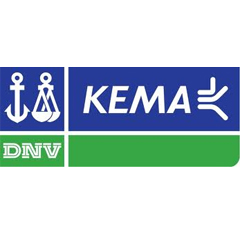London, UK / Arnhem, the Netherlands, February 6 – The new framework document, developed over two years in collaboration with leading consultants and developers, will lead to more transparency and advancements in the quantification of project losses and uncertainties says DNV KEMA.
Various entities in the Renewable UK Wind Resource Working Group have come together to propose that the wind industry adopt a common framework for discussing both energy losses and uncertainties around energy assessments.
Ruben Menezes, project manager for the framework and consultant at DNV KEMA renewable energy services in London, says, “The document has been produced in collaboration with other consultants and developers in the U.K. The loss and uncertainty framework will aid the consultants when performing due diligence on energy assessment completed by other leading consultants. All participants agree to report on their energy assessments in accordance to this framework. The goal for this framework is to lead to more transparency and ultimately advancements in the quantification of projects losses and uncertainties.”
Explaining the need for standard framework definitions, Menezes says a typical wind resource and energy yield assessment derives gross generation from a site’s wind speed frequency distribution and a turbine’s power curve. Technical loss factors are then applied to derive expected net energy generation. Example loss factors include equipment availability, wake losses, icing losses, and electrical line losses. An uncertainty analysis is then conducted to determine the probability distribution of net energy production. Example uncertainty categories include those associated with wind speed measurement, wind shear extrapolation, modeling, and loss assumptions. “However, without standard definitions for such loss factors and uncertainty categories, it is difficult to compare studies prepared by different consultants. Standardized definitions will not only facilitate direct comparison of energy estimates among different consulting studies, it will lead to more productive dialog and ultimately improved understanding of technical losses and uncertainties,” he says.
According to Menezes it is not uncommon for more than one energy assessment to be prepared for a proposed wind power facility. “Often the results of the assessments will have material differences, and these differences typically include different assumptions regarding technical losses used to derive net energy generation from gross energy generation. However, when both the definition of a loss and the value of the loss differ, direct comparisons are difficult to make. Compounding this challenge is the use of different uncertainty categories and their definitions, making it difficult to interpret and compare the results of different reports at the various probability levels. Developers, investors, and the consultants that support them will be able to focus on actual differences between assessments if assessments use a common set of loss and uncertainty definitions,” asserts Menezes.
The framework document has been developed in collaboration with the following participants: Arcus, Dulas, Natural Power, Oldbaum, Prevailing Wind Farm Analysis, Sgurr Energy, SKM, Vattenfall and Wind Prospect. DNV KEMA has managed the project.
“The definitions described in this document have been assembled based on consolidation of loss and uncertainty categories derived from input from the Renewable UK Wind Resource Working Group as well as industry input since circulating a final draft in October 2012,” says Menezes and adds “Every project is unique and requires specific consideration, so not every item listed in this document will apply to every project being analysed or reviewed. The definitions are not an attempt to standardize the values of losses and uncertainties used in an assessment, but instead aim to provide a framework for the definitions. “
About DNV KEMA Energy & Sustainability
DNV KEMA Energy & Sustainability, with more than 2,300 experts in over 30 countries around the world, is committed to driving the global transition toward a safe, reliable, efficient, and clean energy future. With a heritage of nearly 150 years, we specialize in providing world-class, innovative solutions in the fields of business & technical consultancy, testing, inspections & certification, risk management, and verification. As an objective and impartial knowledge-based company, we advise and support organizations along the energy value chain: producers, suppliers & end-users of energy, equipment manufacturers, as well as government bodies, corporations and non-governmental organizations. DNV KEMA Energy & Sustainability is part of DNV, a global provider of services for managing risk with more than 10,000 employees in over 100 countries. For more information on DNV KEMA Energy & Sustainability, visit www.dnvkema.com.



























